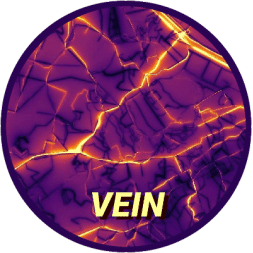
Ibarra-Espinosa, S., Ynoue, R., O'Sullivan, S., Pebesma, E., Andrade, M. D. F., & Osses, M. (2018). VEIN v0.2.2: an R package for bottom–up vehicular emissions inventories. Geoscientific Model Development, 11(6), 2209-2229. https://doi.org/10.5194/gmd-11-2209-2018
I'm excited to announce significant advancements in the VEIN (Vehicular Emissions INventory) model, an open-source R package designed for estimating vehicular emissions at high spatial and temporal resolution. The latest version brings substantial improvements to computational efficiency and modeling capabilities.

New Features in Version 1.0
The updated VEIN model now includes:
- Enhanced spatial analysis capabilities with improved integration with sf and terra packages
- New emission factors for latest vehicle technologies in developing countries
- Improved algorithms for traffic pattern analysis that better capture daily and weekly variations
- Advanced chemical speciation profiles for VOCs and PM
- Parallel processing capabilities that reduce computation time by up to 70%
- Better integration with atmospheric chemistry models like WRF-Chem and CMAQ
Case Studies
Recent applications of the VEIN model have demonstrated its effectiveness in various urban contexts:
- São Paulo, Brazil: Comprehensive inventory with hourly resolution showing the impact of COVID-19 lockdowns on urban air quality
- Santiago, Chile: Analysis of electrification scenarios for public transportation
- Beijing, China: Assessment of policy interventions for reducing particulate matter during winter pollution episodes
These case studies highlight VEIN's versatility in addressing complex urban air quality challenges across different geographical and socioeconomic contexts.
VEIN Version History
The VEIN model has evolved significantly since its inception. Here's a look at some key developments:
Origins (2016-2017)
VEIN began as a collection of R scripts called "remIAG" before its official release. The initial paper describing the methodology was published in the Journal of Earth Sciences & Geotechnical Engineering.
Early Versions (0.2.x - 0.3.x)
- Added support for emissions calculations in various units (kg)
- Implemented NMHC speciation for industrial and buildings sources
- Improved wear emissions calculations with ef_wear and emis_wear functions
- Added age distribution functions with default naming conventions
- Fixed critical bugs in spatial processing and emissions grid generation
Middle Versions (0.6.x - 0.7.x)
- Added split_emis functionality (v0.6.1)
- Introduced PM characteristics including Active Surface measurements
- Enhanced emis_grid to support evaluated parsed text operations ("sum", "mean", etc.)
- Fixed projection issues with various emission factors
- Improved handling of NA and NaN values in grid calculations
Recent Versions (0.9.x and beyond)
- Added speciation for liquid fuels (E25, E100, G)
- Incorporated hybrid gasoline and diesel emission factors for Chinese vehicles
- Developed specialized projects for various regions (e.g., brazil_bu_chem)
- Added PM2.5 speciation for Light-Duty Vehicles (LDV) and Heavy-Duty Vehicles (HDV)
- Enhanced integration with atmospheric chemistry models
This continuous development has made VEIN one of the most comprehensive tools for vehicular emissions modeling, especially for regions with limited data availability.
Future Developments
Looking ahead, we're working on several exciting enhancements:
- Machine learning integration for improved traffic flow prediction
- Real-time emission modeling capabilities using streaming traffic data
- Enhanced visualization tools for policy communication
- Direct interfaces with popular atmospheric chemistry models
The VEIN model continues to be a valuable tool for researchers, urban planners, and policymakers working to understand and mitigate vehicular emissions in urban environments.
